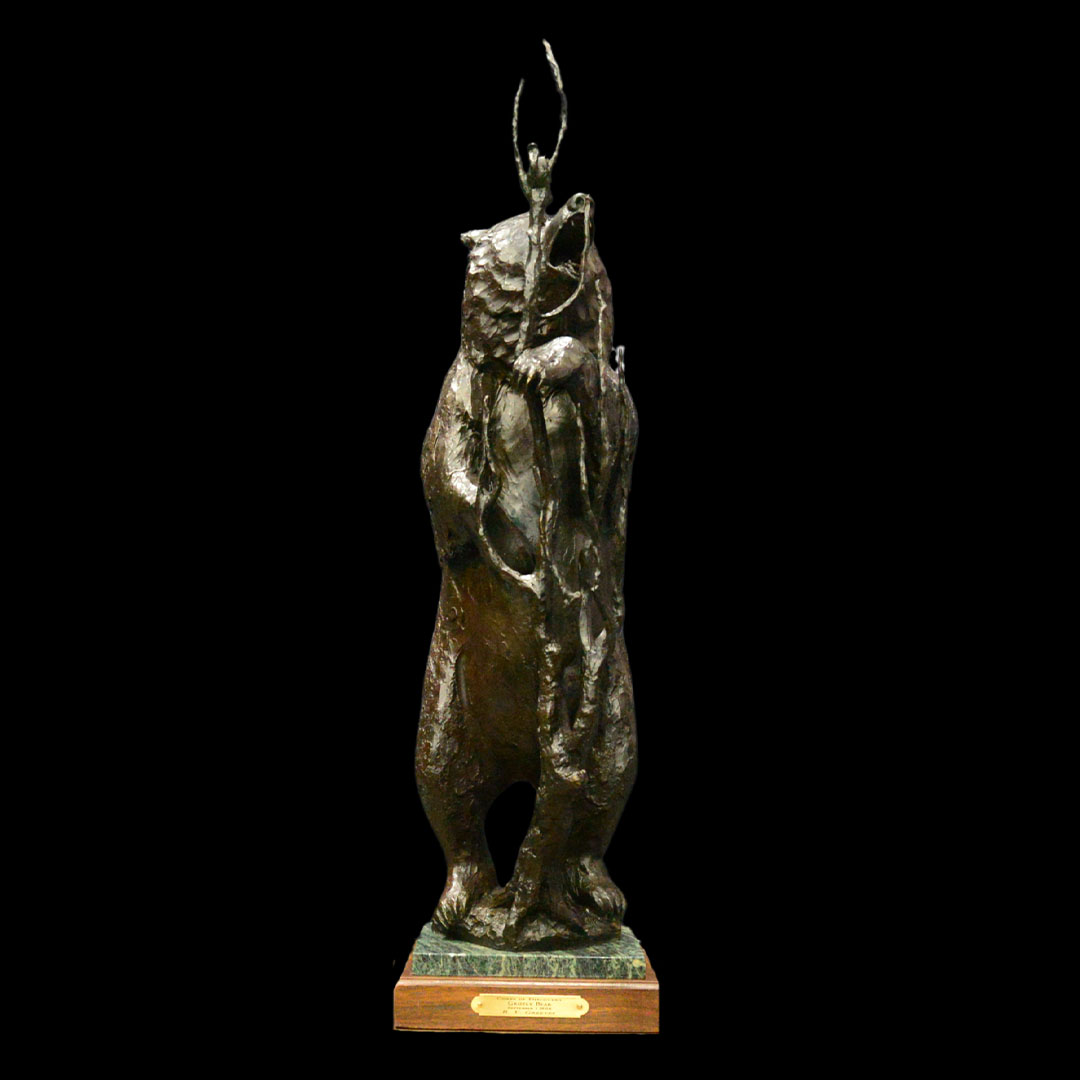Power carved in bronze—a monument to awe, fear, and survival.
Robert “Drizzle” Holton
Contemporary

“Grizzly Bear – September 1, 1804” by Richard Vernon Greeves is a commanding vertical bronze sculpture that fuses myth, nature, and raw presence. The work depicts a towering grizzly mid-roar, paws raised—its posture defiant, its form both abstract and imposing. Emerging from the bear’s raised arms is a small human figure—arms outstretched—confronting the immense force of the beast, perhaps in reverence, perhaps in defiance.
This dramatic work commemorates the first documented encounter between the Lewis and Clark expedition and the North American grizzly bear, an animal they severely underestimated. Greeves captures that clash—not as a literal event, but as a symbolic collision between two worlds: man and wilderness, myth and reality.
Unlike traditional wildlife bronzes, “Grizzly Bear” is sculptural narrative: part totem, part warning, part tribute. The textures are primal, the stance theatrical, and the presence unforgettable. A centerpiece for collectors and institutions exploring themes of frontier encounter, spiritual duality, or the sublime in nature.